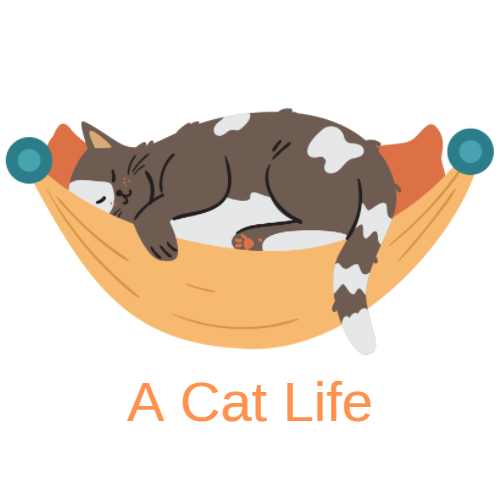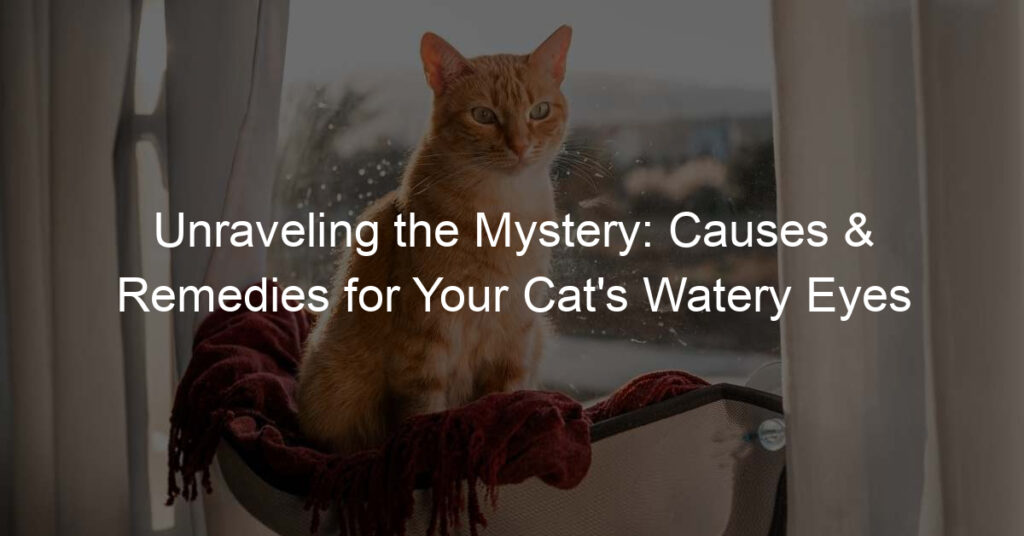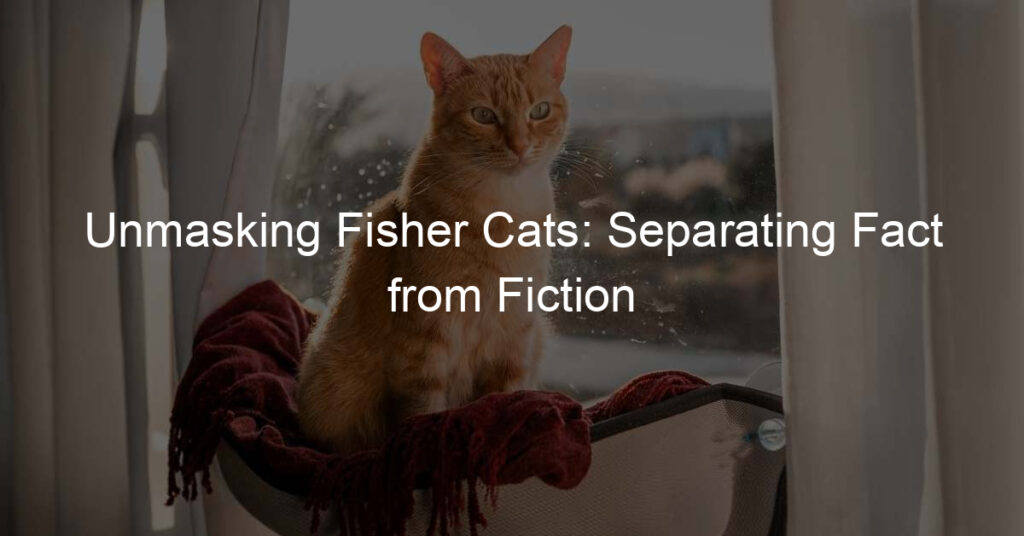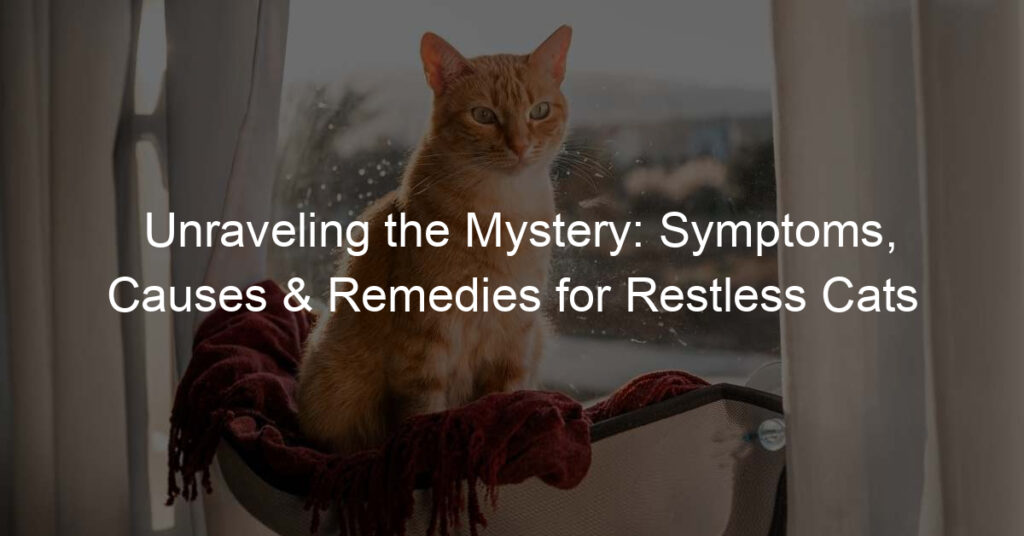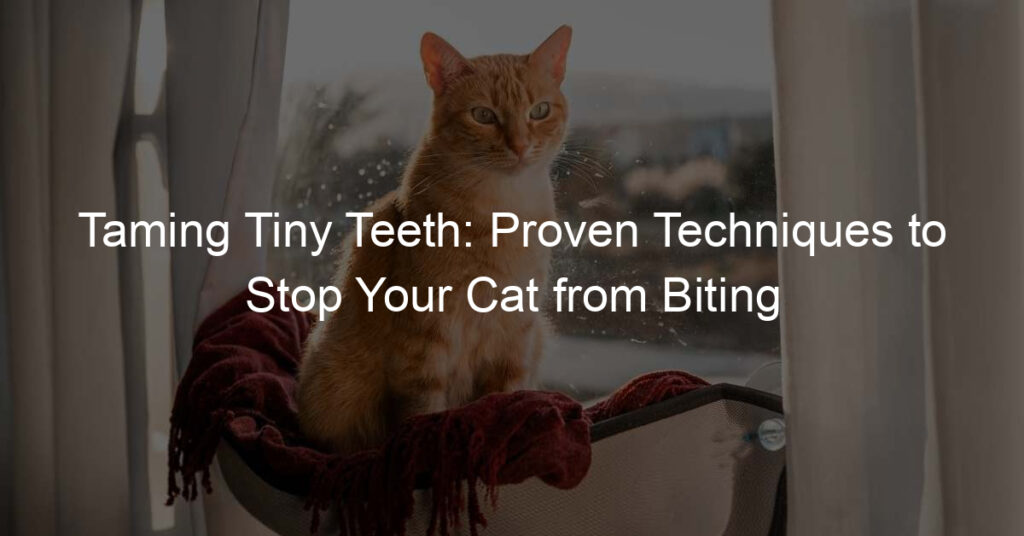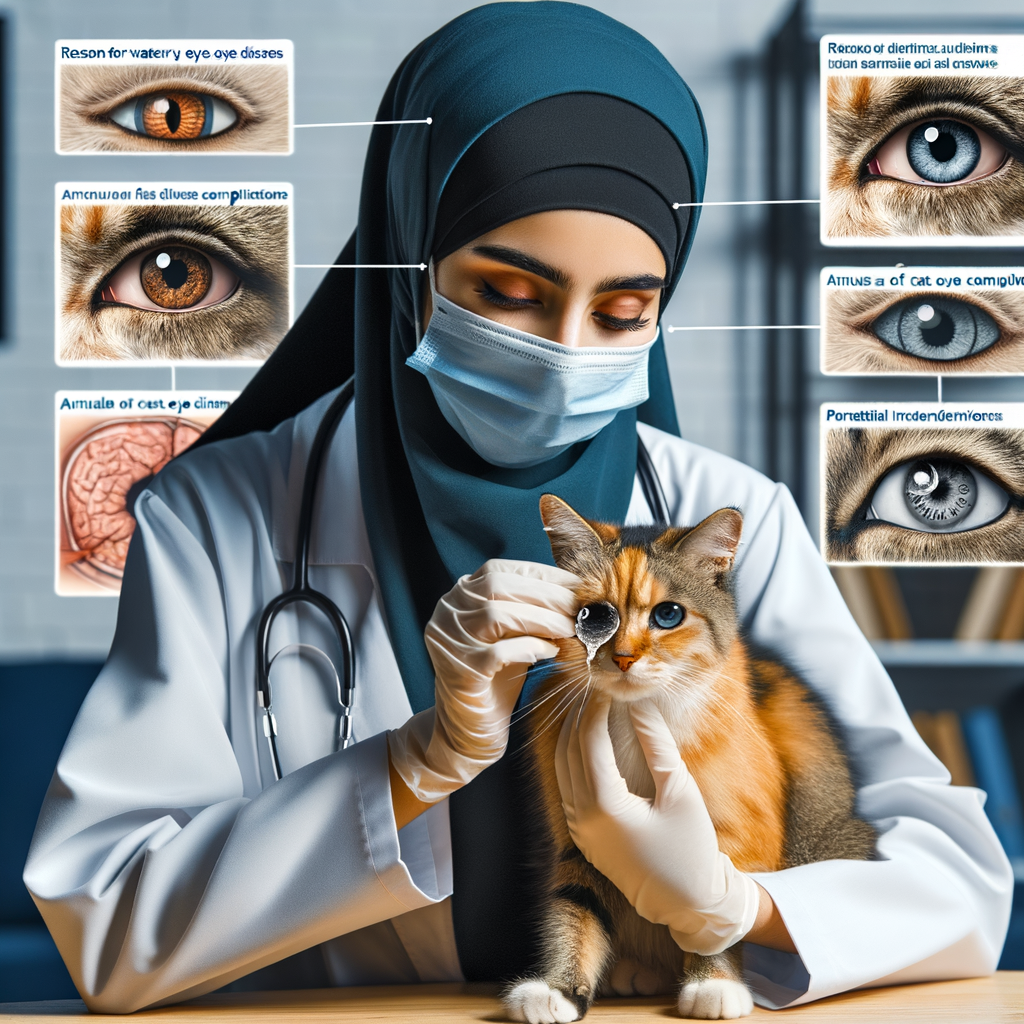
Introduction: Unraveling the Mystery of Your Cat’s Watery Eyes
Have you ever noticed your feline friend’s eyes watering more than usual and wondered why? This article will help you understand the reasons behind your cat’s watery eyes and the importance of recognizing and addressing this issue promptly.
- Overview of the topic
- Importance of understanding cat eye problems
Watery eyes in cats, also known as epiphora, is a common condition that can be caused by a variety of factors. These can range from minor irritations such as dust or allergies, to more serious health issues like infections or diseases. While occasional tearing is normal, excessive or persistent watering should not be ignored as it could be a sign of an underlying health problem.
Understanding your cat’s eye health is crucial for their overall wellbeing. Cats rely heavily on their vision, and any discomfort or impairment can significantly affect their quality of life. Moreover, certain eye conditions, if left untreated, can lead to more serious complications, including blindness. Therefore, being able to recognize the signs of potential eye problems and seeking timely veterinary care is essential for maintaining your cat’s eye health.
As we delve deeper into the topic, we will explore the common feline eye conditions, their symptoms, treatment options, and preventive measures. By the end of this article, you will be better equipped to ensure your cat’s eyes stay healthy and bright.
Understanding the Basics: Feline Eye Conditions
When it comes to our furry friends, their eyes are windows to their health. Just like humans, cats can also suffer from a variety of eye conditions. Understanding these conditions can help us take better care of our pets and ensure they live a healthy and comfortable life. Let’s delve into some of the most common eye problems that cats may face.
Common Cat Eye Problems
There are several eye conditions that can affect cats. Here are three of the most common ones:
- Conjunctivitis: This is a condition where the tissue that covers the cat’s eye becomes inflamed. It can make your cat’s eyes look red and swollen. It’s usually caused by an infection or an allergy. According to a study, conjunctivitis is one of the most common eye problems in cats, affecting about 5% of the feline population.
- Corneal Ulcers: Corneal ulcers occur when there’s a sore on the cat’s cornea, which is the clear layer at the front of the eye. This can be caused by an injury or an infection. Cats with corneal ulcers may squint or keep their eye closed. It’s a serious condition that needs immediate veterinary attention.
- Glaucoma: Glaucoma is a serious eye condition that can lead to blindness if not treated. It happens when there’s too much pressure inside the cat’s eye. This can damage the optic nerve, which is crucial for vision. Signs of glaucoma can include a cloudy or enlarged eye. It’s less common in cats than in dogs, but it’s still a condition that cat owners should be aware of.
These are just a few examples of the many eye conditions that can affect cats. If you notice any changes in your cat’s eyes, such as redness, cloudiness, or excessive tearing, it’s important to consult with a veterinarian immediately. Early detection and treatment can help prevent serious complications and ensure your cat’s eye health.
Causes of Watery Eyes in Cats
Understanding why your feline friend’s eyes are watering can be a bit of a puzzle. There are several potential causes, each with its own set of symptoms and treatments. Let’s explore four common reasons why your cat might be experiencing watery eyes.
- Allergies
- Infections
- Trauma
- Other underlying health conditions
Cats, like humans, can suffer from allergies. These can be triggered by a variety of substances, including dust, pollen, mold, and certain foods. When a cat is exposed to an allergen, its body reacts by releasing histamines, which can cause symptoms such as watery eyes, sneezing, and itching.
Eye infections are another common cause of watery eyes in cats. These can be caused by bacteria, viruses, or fungi. Infections can lead to inflammation and discharge, which can make your cat’s eyes water. If left untreated, some eye infections can lead to serious complications, so it’s important to seek veterinary care if you suspect your cat has an eye infection.
Trauma to the eye, such as a scratch or blow, can also cause watery eyes in cats. This can occur if your cat gets into a fight with another animal, or if it accidentally bumps into something. Trauma can cause the eye to produce excess tears as a protective response.
Finally, watery eyes in cats can be a symptom of other underlying health conditions. For example, conditions such as upper respiratory infections, dental disease, and certain types of cancer can all cause watery eyes. If your cat’s eyes are watering and you can’t identify a clear cause, it’s a good idea to consult with a veterinarian.
Remember, if your cat’s eyes are watering, it’s important to seek veterinary care. While watery eyes can sometimes be a sign of a minor issue, they can also be a symptom of a more serious condition that requires treatment.
Spotting the Symptoms: Cat Eye Infection Symptoms
Recognizing the signs of a potential eye infection in your cat can be crucial in ensuring their health and comfort. One of the most common symptoms is watery eyes. Let’s delve into what to look for.
Identifying Watery Eyes in Cats
Watery eyes in cats can be a clear sign of discomfort or an underlying health issue. Here are some key symptoms to look out for:
- Excessive tearing: If your cat’s eyes are producing more tears than usual, this could be a sign of an infection. It’s normal for cats to have some degree of tearing, but excessive tearing can be a cause for concern.
- Redness: Redness in your cat’s eyes can indicate inflammation, a common symptom of eye infections. If you notice your cat’s eyes are redder than usual, it might be time to consult a vet.
- Visible discomfort: Cats are good at hiding their discomfort, but if your cat is squinting, blinking excessively, or rubbing their eyes, it could be a sign of an eye infection.
Remember, these symptoms can also be signs of other eye conditions. It’s always best to consult with a professional if you notice any changes in your cat’s eyes.
Next, we’ll discuss other related symptoms that can accompany watery eyes in cats. Stay tuned to ensure you’re fully equipped to spot potential eye problems in your feline friend.
Other Related Symptoms
While watery eyes are a common sign of eye infections in cats, there are other symptoms that can also indicate a problem. It’s important to be aware of these additional signs to ensure your cat gets the help it needs as soon as possible. Let’s take a closer look at these symptoms:
- Change in Eye Color
- Cloudiness
- Behavioral Changes
One symptom that might indicate an eye infection in your cat is a change in eye color. Normally, your cat’s eyes should maintain a consistent color. If you notice a sudden change, it could be a sign of an infection or other eye condition. For example, a blue or white haze over the eye could indicate cataracts or glaucoma.
Another symptom to watch out for is cloudiness in your cat’s eyes. This is often a sign of a serious eye condition. Cloudiness can make the eyes appear foggy or opaque, and it can occur in one or both eyes. If you notice this symptom, it’s important to seek veterinary care immediately.
Changes in your cat’s behavior can also be a sign of an eye infection. If your cat is experiencing discomfort due to an eye condition, it may start behaving differently. This could include squinting, rubbing the eyes, or becoming more withdrawn. If you notice any unusual behavior in your cat, it’s always a good idea to consult with a vet.
Remember, these symptoms can be signs of a variety of different eye conditions, not just infections. If you notice any of these symptoms in your cat, it’s important to seek professional help immediately. Early detection and treatment can make a big difference in your cat’s eye health.
Getting Help: Treating Watery Eyes in Cats
If your feline friend is suffering from watery eyes, it’s crucial to seek professional help. There are several treatment options available that can help alleviate your cat’s discomfort and restore their eye health. Here are some of the professional treatment options:
Professional Treatment Options
-
Antibiotics:
Antibiotics are often prescribed by veterinarians to treat bacterial infections causing watery eyes in cats. These medications work by killing the harmful bacteria, thus reducing inflammation and discharge. Remember, it’s essential to complete the entire course of antibiotics, even if your cat’s symptoms seem to improve.
-
Surgery:
In severe cases, where the watery eyes are due to physical abnormalities like blocked tear ducts or eyelid issues, surgery might be required. This is typically a last resort treatment option, used only when other treatments have failed. Rest assured, veterinarians use safe and effective surgical techniques to resolve these issues.
-
Eye drops:
Eye drops are another common treatment for watery eyes in cats. These can help soothe irritated eyes and reduce inflammation. Some eye drops also contain medications to treat underlying infections or conditions. Always use as directed by your vet.
Remember, the best treatment option for your cat will depend on the underlying cause of their watery eyes. Always consult with a professional veterinarian for an accurate diagnosis and treatment plan.
Home Remedies for Cat’s Watery Eyes
If you notice your cat’s eyes are watery, don’t worry. There are several home remedies you can try before reaching out to a vet. These remedies are simple, safe, and can be very effective. However, remember that these are only temporary solutions. If your cat’s condition doesn’t improve, it’s important to seek professional help.
- Warm Compress
- Keeping the Eye Area Clean
- Over-the-Counter Treatments
A warm compress can help soothe your cat’s watery eyes. Soak a clean cloth in warm water, wring it out, and gently apply it to your cat’s eyes. Be sure to use a different part of the cloth for each eye to prevent spreading any potential infection. Repeat this process a few times a day.
Keeping your cat’s eye area clean is crucial. Use a soft, damp cloth to gently wipe away any discharge. Always wipe from the inner corner of the eye outward and use a fresh area of the cloth for each wipe. This can prevent bacteria from spreading and causing an infection.
There are several over-the-counter treatments available that can help with your cat’s watery eyes. These include eye drops and ointments specifically designed for cats. Always follow the instructions on the package and consult with your vet if you’re unsure about anything.
Remember, these remedies are not a substitute for professional veterinary care. If your cat’s eyes continue to water, or if they show signs of discomfort or distress, it’s important to seek help from a vet. Your cat’s eye health is important, and catching any potential problems early can help ensure they live a long, healthy life.
Prevention: Avoiding Future Cat Eye Problems
Preventing future eye problems in your cat is a crucial part of ensuring their overall health and happiness. Here are some key steps you can take to help avoid these issues:
- Regular vet check-ups: Regular visits to the vet are essential for your cat’s eye health. Your vet can spot early signs of eye conditions and provide treatment before they become severe. According to the American Veterinary Medical Association, cats should have a check-up at least once a year. During these visits, your vet will examine your cat’s eyes for signs of infection, injury, or disease.
- Proper hygiene: Keeping your cat’s eyes clean is another important step in preventing eye problems. Wipe your cat’s eyes gently with a soft, damp cloth to remove any discharge. Always use a separate cloth for each eye to avoid spreading any potential infection. Also, remember to wash your hands before and after cleaning your cat’s eyes to prevent the spread of bacteria.
- Monitoring your cat’s behavior: Pay close attention to your cat’s behavior. Changes in behavior can often be the first sign of a health problem. If your cat is squinting, blinking excessively, or seems to be avoiding light, it could be a sign of an eye problem. Similarly, if your cat is pawing at its eyes or seems to have trouble seeing, it’s time for a visit to the vet.
Remember, prevention is always better than cure. By taking these steps, you can help ensure your cat’s eyes stay healthy and bright.
Conclusion: Ensuring Your Cat’s Eye Health
As we wrap up this comprehensive guide on your feline friend’s eye health, let’s summarize the key points and offer some final thoughts and advice.
- Summary of the article:
- Final thoughts and advice:
We started by unraveling the mystery behind your cat’s watery eyes and then delved into understanding the basics of feline eye conditions. We highlighted the importance of spotting the symptoms of cat eye infections early and discussed various treatment options for watery eyes in cats. Finally, we shared some preventive measures to avoid future cat eye problems.
Ensuring your cat’s eye health is a crucial part of pet ownership. Regular check-ups, prompt treatment of infections, and preventive measures can go a long way in maintaining your cat’s eye health. Remember, early detection of symptoms can make a significant difference in the outcome of the treatment. So, keep a close eye on your feline friend and consult your vet if you notice any changes in their eyes.
Let’s not forget that our pets rely on us for their well-being. Let’s ensure we give them the care they deserve. After all, a healthy cat is a happy cat!
